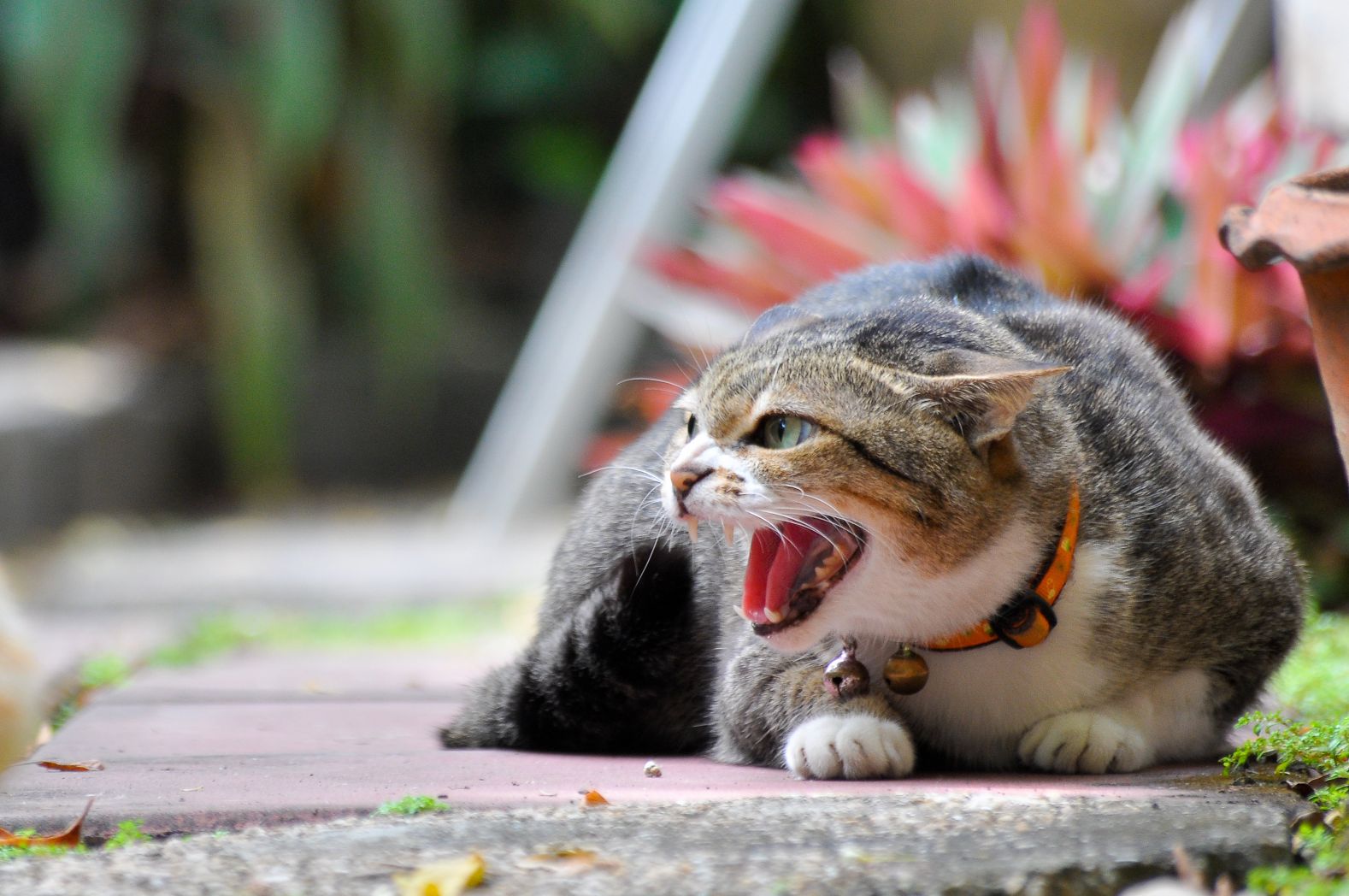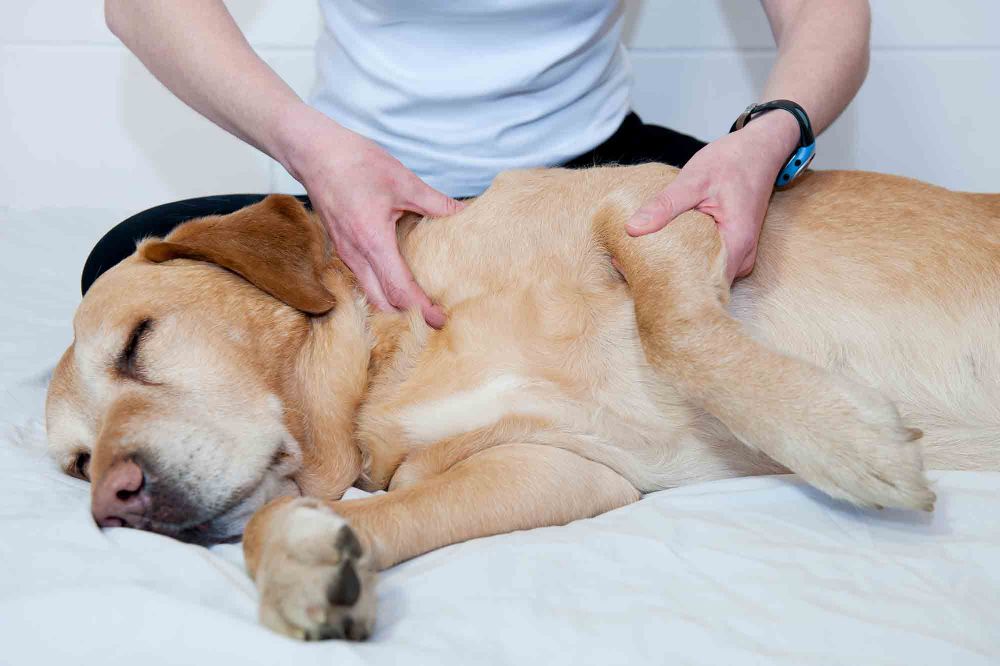Posts in Category: Exercise Nutrition & Obesity
The Many Explanations Of Food Aggression in Cats

Cats can definitely adapt well to their home environments, and see few reasons to rock the boat. Fairly agreeable when it comes to their daily needs, cats can enjoy meal times, litter box visits, grooming, and play-ambushing without incident. That doesn’t mean that all cats have it easy, though. Certain behaviors, like food aggression in cats, have the potential to alienate others and make a peaceful cohabitation next to impossible.
Continue…Winter Activities for Pets to Keep Them (and You) Moving
 The long months of winter can have most of us wanting to curl up on the couch. Add to that the busyness of the holidays, frequent travel, and inclement weather, and keeping up with your pet’s exercise needs can be a challenge.
The long months of winter can have most of us wanting to curl up on the couch. Add to that the busyness of the holidays, frequent travel, and inclement weather, and keeping up with your pet’s exercise needs can be a challenge.
Thankfully your friends at The Bluffs Pet Clinic have some fun, exciting, and easy winter activities for your pet that will have you both up and moving. Let’s take a look at some of our favorite winter activities for pets – and you, too! Continue…
Grain Free Pet Food: Fact Versus Fiction
 We all want to do the best when it comes to feeding our families, and that includes those with four legs. Many of our clientele have been drawn in to the grain free pet food fad, but the truth is that this trend may not be a great one. So how are you to know? Let The Bluffs Pet Clinic help you understand how to make the best diet choices for your pet.
We all want to do the best when it comes to feeding our families, and that includes those with four legs. Many of our clientele have been drawn in to the grain free pet food fad, but the truth is that this trend may not be a great one. So how are you to know? Let The Bluffs Pet Clinic help you understand how to make the best diet choices for your pet.
The Potential Problem with Grain Free Pet Food
The popularity of grain free pet food has been on the rise over the last decade or so thanks to the advent of some very heavily and successfully marketed pet food brands. Grain has been deemed a filler ingredient and blamed for a number of health conditions. In reality, very few pet health problems are related to grain and from a nutritional standpoint grain can even be a valuable ingredient when properly utilized.
Four-Legged Rejuvenation: The Benefits of Tui Na for Pets

Who among us can deny the pleasure and benefits of a good massage? Whether you have sore muscles, are recovering from an injury, or simply enjoy a little bit of stress relief from time to time, a good massage can certainly hit the spot.
It probably comes as no surprise that massage can have many of the same benefits for pets as it does for people, and that more pet owners are turning to massage as a way to help ease pain and promote healing in their fur babies.
If you’ve ever considered booking a massage for Fido or Fluffy, we invite you to consider Tui-Na, a form of traditional Chinese massage therapy. Tui-Na for pets is growing in popularity as a non-invasive, drug-free way to speed healing and increase well-being (and the pets seem to enjoy it as well).
Continue…The Link Between Pet Obesity and Exercise
With pet obesity numbers skyrocketing (over half of all cats and dogs!), it’s critical to not only measure precise meal portions, but to keep a daily exercise routine, as well.
 Animals love to eat as much as we do. Some like to snack throughout the day – and relish every bite – while others enjoy scarfing down their meals in a single gulp (only to beg for more). Free-feeding doesn’t always result in an overweight pet, but when pets consume more calories than they need on a daily basis, weight gain is guaranteed. With pet obesity numbers skyrocketing (over half of all cats and dogs!), it’s critical to not only measure precise meal portions, but to keep a daily exercise routine, as well.
Animals love to eat as much as we do. Some like to snack throughout the day – and relish every bite – while others enjoy scarfing down their meals in a single gulp (only to beg for more). Free-feeding doesn’t always result in an overweight pet, but when pets consume more calories than they need on a daily basis, weight gain is guaranteed. With pet obesity numbers skyrocketing (over half of all cats and dogs!), it’s critical to not only measure precise meal portions, but to keep a daily exercise routine, as well.
Connect the Dots
Pet obesity is linked to various illnesses, such as diabetes, arthritis, and heart disease. Because it decreases overall health and wellness, excessive weight affects life expectancy. The good news? It’s 100% preventable!
The Reality
Most pet owners caring for overweight or obese pets perceive their pets as being at a normal weight. Some pet owners may not realize what their pet’s optimal weight is, but this pet weight check guide provides a lot of guidance on the subject. Being able to feel the ribs, see an hourglass figure when looking down at the length of the back, and seeing an obvious tuck of the abdomen are excellent markers for ideal weight.
Counting Calories
The best defense against pet obesity is a two-fold approach. It’s absolutely vital to maintain proper nutrition for your pet’s breed, species, age, and lifestyle. Use this Calorie Counter to ensure your pet’s current weight is commensurate with portion size. Changing your pet’s diet and caloric intake can have surprising results; we’re happy to help you with this.
If you offer snacks, alter your pet’s meal portions. Try raw fruits and fresh veggies (but never raisins/grapes, onions, garlic, and more).
Have Fun!
The second component has to do with daily exercise. If your usual routine borders on the mundane, take your dog to new places to get into an exciting exercise flow. Also, take them wherever you go to keep them moving throughout the day. Many places are becoming “pet-friendly.” Introduce them to new friends and keep them active as much as possible between meals.
Cats who spend most/all of their time indoors can benefit from a “catio” or an enclosed outdoor space. Keep their interests in mind (jumping, chasing, climbing, scratching, etc.) when designing and constructing this enclosure to maximize activity levels.
Reversing Pet Obesity
Pet obesity is preventable, but when it’s recognized, diagnosed, and handled correctly, it’s reversible. Make sure to keep your pet’s routine wellness exams every 6-12 months. If there are any changes to your pet’s weight (even slight ones), we can step in right away to prevent obesity-related problems down the road.
If you have any additional questions or concerns, we encourage you to reach out to us at The Bluffs Pet Clinic of Red Wing.
The Prevention and Treatment of Pet Diabetes
 As a dedicated pet owner, you want to do your best to ensure your pet is at the top of their game. That means providing top-notch food, daily opportunities for exercise, and access to routine wellness care. Sometimes, however, pets develop an illness despite their owner’s best efforts. Pet diabetes is one of many age-related conditions that can not only be treated and controlled, it can also be prevented.
As a dedicated pet owner, you want to do your best to ensure your pet is at the top of their game. That means providing top-notch food, daily opportunities for exercise, and access to routine wellness care. Sometimes, however, pets develop an illness despite their owner’s best efforts. Pet diabetes is one of many age-related conditions that can not only be treated and controlled, it can also be prevented.
What is Pet Diabetes?
Glucose is a sugar that’s produced from digested food. Absorbed by the intestines, glucose travels throughout the body via the bloodstream as a source of energy. In order for cells to absorb the glucose, insulin is required. Produced in the pancreas, the amount of insulin required depends on the level of glucose in the blood.
Pet diabetes occurs when the pancreas does not produce enough insulin or as the result of the body’s inability to sufficiently utilize insulin. In turn, blood glucose levels are profoundly impacted, and unused glucose accumulates in the bloodstream.
Connecting the Dots
Pet diabetes can affect any pet regardless of species, age, gender, and breed. However, it’s more common among senior pets, obese or significantly overweight pets, and those with genetic predispositions.
Know the Signs
Common side effects of pet diabetes include:
- Excessive thirst and commensurate urination
- Excessive appetite while losing weight
- Sleepiness or lethargy
- Neglecting grooming needs
- Thinning or dull, dry hair
- Cloudy eyes
A physical examination and urine test are often needed for diagnosis. We look for glucose in the urine, as well as ketones (the by-product of the body breaking down fat instead of glucose for energy). If glucose is detected, we’ll draw blood to measure the blood glucose level.
Time, Patience, and Dedication
Early diagnosis, effective treatment, and daily monitoring are the keys to enhancing a diabetic pet’s length and quality of life. While there’s no cure for pet diabetes, daily insulin injections, a prescription diet, and regular exercise round out the methods for successful treatment. We highly recommend adhering to a wellness plan in order to prevent and/or mitigate diabetes-related health problems, such as:
- Cataract formation
- Blindness
- Weakened hind legs
- Nerve damage
- Muscle atrophy
- Weakness
Nutritional counseling can help control blood glucose levels, as well as mapping out strict meal times for your cat or dog.National Pet Diabetes Month
November is National Pet Diabetes Month, and we’re proud to help raise awareness about this condition and help pet owners cope with the potential challenges related to pet diabetes.
If you have any questions or concerns about your pet’s health, our veterinarians are always here for you. Please don’t hesitate to give us a call!

